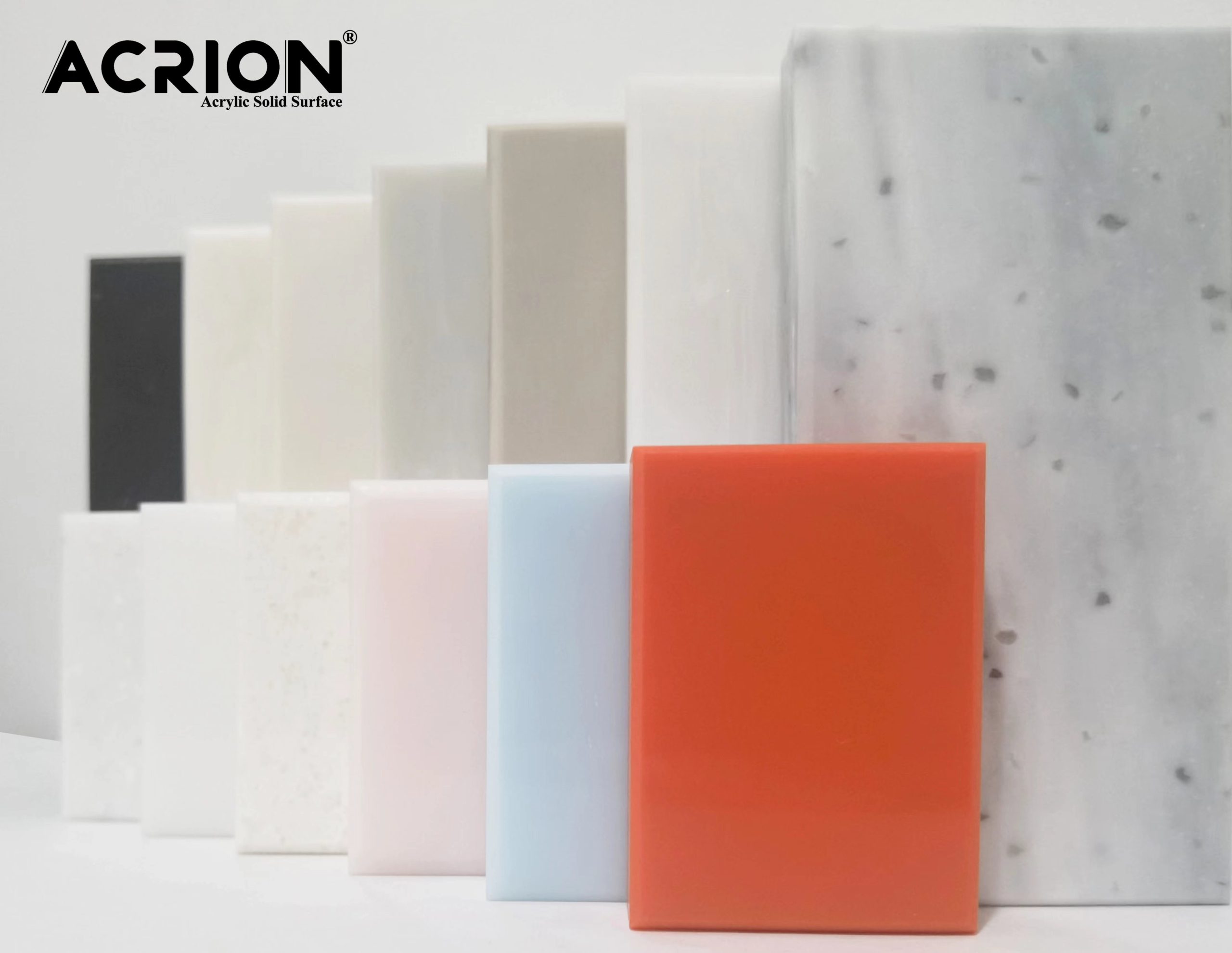The flatness control of the installation of Kelinai countertops is a key link to ensure the overall aesthetics, functionality and service life. It needs to be systematically advanced from four dimensions: basic conditions, construction techniques, tool selection and inspection and acceptance. The following are specific measures and key points:
First, basic condition control
Pre-treatment of cabinet flatness
The horizontal error at the top of the cabinet should be controlled within ±1mm/m, which can be detected by a laser level. If the cabinet is tilted, use leveling feet or washers to adjust it to avoid uneven force on the countertop due to the unevenness of the cabinet.
The surface of the cabinet should be smooth and free of protrusions, especially the edge areas in contact with the countertop. If there are any gaps or unevenness, sealant or rubber strips should be used to fill them to prevent the countertop from shaking after installation.
Environmental factor control
The installation environment temperature should be maintained between 10℃ and 30℃, and the humidity should be below 70%. Excessively high or low temperatures may cause abnormal curing of the glue, and excessively high humidity may lead to expansion or contraction of the countertop.
Avoid construction in strong wind or vibrating environments to prevent the countertop from shifting during the curing process.
Second, construction process control
Construction of supporting structure
Evenly lay anti-vibration silicone strips or rubber pads on the top of the cabinet, with a recommended thickness of 3-5mm, to ensure there is no hard contact between the countertop and the cabinet and reduce the transmission of vibrations.
For long countertops (such as those exceeding 1.5 meters), a support frame should be added at the middle position. The height of the support frame must be exactly the same as the top of the cabinet to prevent the countertop from sagging due to insufficient support.
Countertop hoisting and positioning
At least two people should work together to place the countertop steadily on the cabinet to avoid tilting due to one-sided force. The edge of the countertop should be aligned with the edge of the cabinet, and the error should be less than 2mm.
Use a laser level to monitor the levelness of the countertop in real time. If any deviation is found, it needs to be corrected by adjusting the support frame or gasket.
Fixation and gluing
Evenly apply the special glue (such as polyurethane glue) on the contact surface between the countertop and the cabinet body. The amount applied should be moderate to prevent the glue from overflowing and contaminating the countertop.
After fixation, it is necessary to apply uniform pressure with a fixture or a heavy object (such as a sandbag) to ensure that the glue is fully cured. The pressurization time should be carried out in accordance with the glue manual, usually more than 24 hours.
Third, selection of tools and materials
Measuring tools
Use a high-precision laser level (with an accuracy of ±0.5mm/m) for level detection to avoid deviations caused by human reading errors when using traditional bubble levels.
Equipped with a steel ruler (accuracy 0.1mm) and a feeler gauge (accuracy 0.01mm), it is used to detect the gap width between the countertop and the cabinet body.
Auxiliary materials
Choose rubber pads or silicone strips with good elasticity and aging resistance to ensure that they can maintain their supporting effect even after long-term use.
The glue should be a dedicated product compatible with the material of Klinai. After curing, it should have high strength and water resistance.
Fourth, inspection and acceptance
Installation process detection
After the countertop is hoisted and before gluing, a laser level should be used again to check the levelness to ensure that the error is within the allowable range.
Check whether the gap between the countertop and the cabinet is uniform. If there is a local gap that is too large, the support structure needs to be readjusted.
Acceptance after curing
After the glue is completely cured, use a steel ruler and a feeler gauge to check the flatness of the countertop edge and the cabinet edge. The error should be less than 1mm.
Tap each area of the countertop gently to check for any hollowing or loosening. If any abnormality is found, it needs to be removed and reinstalled.
Long-term stability monitoring
Within 72 hours after installation is completed, avoid placing heavy objects or applying external forces on the countertop to ensure that the glue is fully cured.
Regularly check the levelness of the countertop, especially after one year of use. Due to environmental changes, it may cause slight deformation and needs to be adjusted in time.
Fifth, Common Problems and Solutions
The edge of the countertop is lifted up
Reason: Insufficient cabinet support or incomplete curing of the glue.
Solution: Add a support frame or extend the curing time of the glue. Rebond if necessary.
The middle part of the countertop sinks.
Reason: The long countertop is not equipped with a middle support or the support heights are inconsistent.
Solution: Add support frames and ensure consistent heights, and readjust the levelness of the countertop.
The gap between the countertop and the cabinet body is uneven
Reason: The cabinet body is uneven or the countertop was not aligned during installation.
Solution: Adjust the cabinet’s leveling feet or reinstall the countertop to ensure even gaps.
